Off-grid living is something that many of us aspire to. Not only does it provide for excellent self-sufficiency and sustainability living in a post-disaster world, but it allows us a most cost-effective and sustainable lifestyle in the here and now. Of course, different people have different reasons for going off-grid, but the end result and the process one must go through are more or less the same.
I’m not talking about living in a world without an electric grid here, nor am I talking about a world where you can’t produce your own electricity. One of the central components of off-grid living is the ability to produce your own electric power. Granted, you would probably be limited in how much electric power you could produce, but you could produce it.
Let me be clear about that. I looked into the prospects of converting to 100% solar power, or at least a reasonable facsimile of it, in my previous home. It was going to cost $60,000. That was without any battery backup system, and depending on the electrical grid to act as my “battery,” providing power when I didn’t produce enough and buying excess power off me, when I was producing too much. While I really don’t like that sort of system, I got bids anyway, simply to have a better understanding of the cost.
A true off-grid system would mean no connection whatsoever to the grid. The only electric power you would have would be that which you produce, just like the only water you would have is that which you harvest from nature. Considering the cost I mention above, that probably means a limited amount of electricity.
With that as a basis, energy efficiency is an important factor. It would be unrealistic to think that one could use massive power tools and air conditioning 24/7. Rather, the usage of either would have to be limited, replacing them as much as possible with other, non-electric alternatives.
Based on that, there are a number of things we would have to consider and a number of specialty tools that we would have to have, in order to live our lives. Some could be gasoline powered, as that wouldn’t break the “rules of living off-grid.” But obviously, you wouldn’t want to run those tools 24/7, as that would be more expensive than being on the grid.
Off-Grid Electricity
This isn’t an article about producing your own electricity, so I’m not going to get into a lot of detail about it. I just want to mention that off-grid living requires not only the ability to produce your own electric power and water; it also requires the means of storing it. You’re obviously going to need solar panels, a wind turbine and a battery backup. Make sure your battery backup is big enough to meet your needs.
 If you can, hydropower is better and more reliable than either wind or solar. But that requires having a river or stream on your property or bordering your property. It will also probably require getting the appropriate permits from the appropriate government agencies. But if you can, you’ll have a much more reliable means of producing electricity, than either wind or sun can provide.
If you can, hydropower is better and more reliable than either wind or solar. But that requires having a river or stream on your property or bordering your property. It will also probably require getting the appropriate permits from the appropriate government agencies. But if you can, you’ll have a much more reliable means of producing electricity, than either wind or sun can provide.
There is one major thing I want to mention here, about producing your own electric power. That is, you will be depending on unreliable power sources. The big problem with “green energy” is that the most popular forms of green energy production, wind and solar, are unreliable, because the sun doesn’t always shine and the wind doesn’t always blow. So you need to have a backup plan for just about everything, especially anything that will require the use of whatever electric power you produce.
Keeping Cooking in the Kitchen
While we don’t normally think of it as such, one of our biggest areas of tool use is in the kitchen. All of the appliances there are tools, as well as many utensils used in cooking. While I’m sure that you could use at least some of them in an off-grid lifestyle, I’m also sure that you would be better off having manual versions, so that you have that power available for other things.
Wood Cook Stove
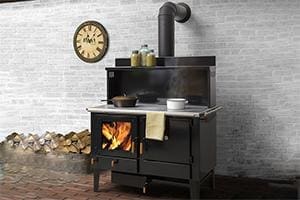 Probably the most important tool for any kitchen, as well as the most expensive, is the stove. You can cook over an open fire, either in a fireplace or outdoors in a fire pit, but it’s much easier to cook on a range. That’s why the fireplace was replaced by the cast-iron kitchen stove.
Probably the most important tool for any kitchen, as well as the most expensive, is the stove. You can cook over an open fire, either in a fireplace or outdoors in a fire pit, but it’s much easier to cook on a range. That’s why the fireplace was replaced by the cast-iron kitchen stove.
They’re an expensive investment, but if you want to eat well, that’s probably an investment worth making.
Hand-crank Mixer
If there’s one appliance that real cooks use (as opposed to people who just warm things up), it’s got to be an electric mixer. They’re a versatile tool, especially for those who like to bake. Some things just about can’t be done any other way. But as a motorized tool, mixers use a lot of power. So I’d try to replace that mixer with an old-fashioned hand crank one and maybe a whisk.
Grater
The modern food processor is really just a motorized grater. Granted, it’s a lot faster and easier to work with, but it does the same job. I actually don’t have one, unless you count my coffee mill/spice grinder. Rather, I use one of those four-sided stainless-steel graters. It seems to do the job just fine.
Root Cellar
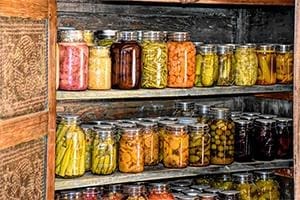 Maybe this is a bit big to be considered a tool, but an off-grid kitchen has to have some means of keeping food cool. Unless you’re powering your refrigerator off of solar panels, your best bet if probably to dig a root cellar.
Maybe this is a bit big to be considered a tool, but an off-grid kitchen has to have some means of keeping food cool. Unless you’re powering your refrigerator off of solar panels, your best bet if probably to dig a root cellar.
For that matter, even if you are powering your fridge off those solar panels, a root cellar will expand your storage greatly, allowing you to keep the vegetables you grow much longer, without having to can them.
Brick or Clay Oven
I suppose there are those who can survive without an oven. Actually, I know a lot of people who do. But I like to bake and a Dutch Oven just isn’t enough. So I would have to say a brick or clay oven (yeah, they’re the same, since bricks are made of clay) is an indispensable part of any off-grid kitchen.
The nice thing about this tool, is it’s something you can build as a weekend project. Once you’ve got it done, you can celebrate by making yourself some brick oven pizza.
Foot-powered Washing Machine
Washing clothes has to be one of the toughest household chores. Not only does it take a lot of water and energy, the clothes seem to reproduce. You never get done with the job. Doing physical work, which will make you perspire, only increases the amount of clothing you need to wash.
Running a clothing washer and especially a dryer uses a lot of energy. Therefore, it only makes sense to have an alternative method. If we don’t want to use an old-fashioned washboard, then probably the best bet is one of the foot-powered washing machines that are being made. They only hold about five gallons of clothing and water, so you’ll have to do the wash often; but it’s easier than other options.
Butter Churn
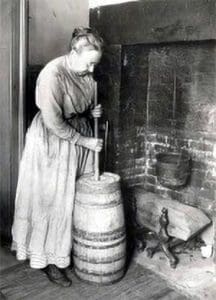 This one depends a lot on what you mean by off-grid living. If you really want to go off-grid and be as independent as possible, then you might want a butter churn, so that you can make your own butter. But then again, you could always buy it in the grocery store.
This one depends a lot on what you mean by off-grid living. If you really want to go off-grid and be as independent as possible, then you might want a butter churn, so that you can make your own butter. But then again, you could always buy it in the grocery store.
Old-time Campfire Coffee Pot
If there’s any kitchen appliance that’s used more than the electric mixer, it has to be the coffee pot. Many of us can’t start our day without a morning cup or two. That usually means making it in a drip coffee maker.
While the drip coffee maker doesn’t really use a lot of electricity, you could save some by boiling your coffee in the kind of pot that was used over a campfire. That’ll produce coffee that’s strong enough to float a horse shoe, and it’s good coffee at that.
Heating Your Home
Heating your home is a real challenge in an off-grid lifestyle. That is, it’s a challenge unless you live somewhere in the Deep South or Southwest, where you don’t have all that many days where it gets cold enough to have to heat it.
You’re probably going to end up heating with wood, which means having the means to keep your wood pile stocked up and ready to go. It also means doing something to take that heat to other parts of your home.
Wood-burning Stove
The first and most obvious tool you’ll need for heating your home is a wood-burning stove. Yes, I call that a tool; it meets the definition of one. While it is possible to heat your home from a fireplace or even from a fire pit in the middle of the floor, a wood-burning stove is much more efficient. You’ll get more heat per pound of wood, than you will out of a fireplace.
Chain Saw
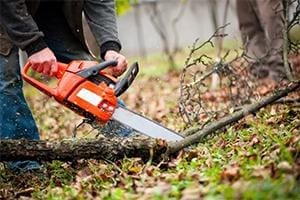 Since we’re not talking about a post-apocalyptic time, I have to start this section’s list off with a chain saw. You’re going to have to cut a lot of wood and that’s the most efficient way to do so. Fallen tree limbs and dead trees can both be converted to firewood, if you’ve got the means to cut it.
Since we’re not talking about a post-apocalyptic time, I have to start this section’s list off with a chain saw. You’re going to have to cut a lot of wood and that’s the most efficient way to do so. Fallen tree limbs and dead trees can both be converted to firewood, if you’ve got the means to cut it.
Something to Haul Wood With
You’re going to have to get all that wood home somehow. For most, that probably means a pickup truck. But you could also get by with a trailer, towed behind another vehicle. In the worst possible case, a two-wheeled hand cart would work, if you’re willing to make a lot of trips back and forth.
Bucking Saw
Depending on whether or not you have a chain saw, as well as how much confidence you have in that saw to keep running, you might want to have a bucking saw. This is specifically designed to cut those tree branches down to the right length for your wood-burning saw, before splitting it. There are other saws that can be used, like a bow saw, but the bucking saw is the time-tested best solution for the problem.
Maul or Log Splitter
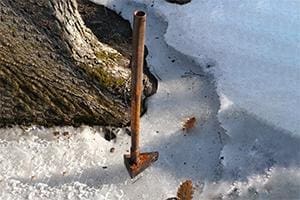 Those logs are not only going to have to be cut to length, but split as well. Split wood burns considerably better than logs, because one of the things that the bark of the tree does is to protect the tree from fire. So it’s a good idea to split smaller logs as well, not just the large ones.
Those logs are not only going to have to be cut to length, but split as well. Split wood burns considerably better than logs, because one of the things that the bark of the tree does is to protect the tree from fire. So it’s a good idea to split smaller logs as well, not just the large ones.
The most basic way of splitting firewood is with a maul. This is a wide-headed axe; the idea being that the wider wedge of the head will help with the splitting action. A regular axe is designed with a narrow head, so that it will penetrate better; but it doesn’t split wood well.
Of course, you can go much more efficient by buying one of the various log splitters that are on the market. Generally speaking, these require less physical force on your part, making the job easier. Some of them are also much faster to use, saving time.
Wood Caddy
Carrying split firewood in your arms is a great way to scrape up your skin and stick yourself with the occasional splinter. Better to use a wood caddy. This is a piece of hemmed canvas, with wood handles on both ends. Wood is piled on the canvas, then the two handles are brought together, making a nice, easy to carry bundle.
Bed Warmer
I don’t think I’d try heating my home off-grid, without having a bed warmer. Remember, your wood-burning stove is really only going to heat the living areas of your home; you’ll get minimal heat in the bedrooms. A bed warmer will make it so that your bed isn’t freezing when you get into it.
Contrary to popular belief, coals from the fire weren’t put in the bed warmer. They would make the sheets dirty. Instead, rocks were put in the warmer, which was then placed on the fire to warm it. A good bed warmer, filled with hot rocks, could warm up several beds.
Soapstones
Soapstone is an amazing material, with a number of very useful characteristics. But for our purposes right now, the characteristic we’re most interested in is that it has a high specific heat capacity. Our ancestors took advantage of this, warming soapstones in the coals of their fires, then using that as a portable heater, taking them in their wagons and even to church with them, wrapped in cloth, so that they could be carried.
A soapstone under a table, sofa or desk radiates heat. It just does it without having to be plugged into an electric outlet and using a lot of power.
Growing Your Own Food
Different people have different ideas about what off-grid living looks like; or maybe I should say that they have different degrees that they are willing to go to, in order to live off-grid. Some are just concerned about their utility bills, while others are trying to become as self-sufficient as possible. This later group tends to grow a lot of their own food as well.
I don’t want to go into a list of things you have to have, if you’re going to raise your own food. That’s a pretty large list, all by itself. But I do want to mention a few things that you should have for processing that food.
Smoker
Of all types of food, meat is the hardest to preserve. It’s also the most necessary to preserve, as it begins to go bad faster than any other type of food. That’s why a smoker or smokehouse is so important. Of all the means of preserving meats, the only thing that’s simpler than smoking it is to turn it into jerky. But smoked meat is much more easily used in preparing meals than jerky is.
Grain Mill
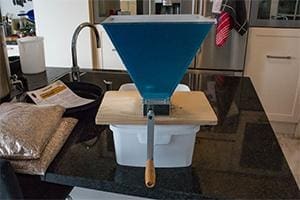 Few people bother growing their own grains, as growing them takes up so much space. But if you’re up to the challenge, growing your own grain is kind of like one of the last great barriers to becoming totally self-sufficient in your food production.
Few people bother growing their own grains, as growing them takes up so much space. But if you’re up to the challenge, growing your own grain is kind of like one of the last great barriers to becoming totally self-sufficient in your food production.
Just remember that you have to dry that grain, and then you’ll need to grind it to make it usable. That’s where a grain mill comes in. Make sure you get a good one, especially if you’re planning on baking with the flour you produce.
Juicer
Fruit can be eaten whole, canned or juiced. Of course, juicing requires having a juicer. What kind you decide to have will depend on the kind of fruit that you’re going to juice. Juicers for citrus fruit are considerably different from the juicers we would use for stone fruit. And don’t forget the cider press, if you happen to have an apple orchard.
Dehydrator
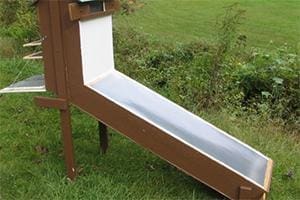 Dehydrating is one of the more efficient means of food preservation and one that can be used for just about any food. If you think about it, everything from grains to fish, via fruits and vegetables have been dehydrated at some time and in some place.
Dehydrating is one of the more efficient means of food preservation and one that can be used for just about any food. If you think about it, everything from grains to fish, via fruits and vegetables have been dehydrated at some time and in some place.
In order to stick with the off-grid lifestyle, it would probably make more sense to have a solar dehydrator, rather than an electric one. Dehydration of food to preserve it actually started out as solar dehydration, long before the idea of While I’ve used an electric dehydrator for years, I can definitely see the advantages of going solar.
Making Repairs and Other Projects
When we talk about tools, the first thing that comes to my mind are the tools in my workshop. Up until now, I’ve focused on other types of tools; but I don’t want to forget about them. Like most people who make and repair things, I depend heavily on power tools. But if I was living off-grid, I’d have to curtail my use of power tools, relying on hand tools whenever I could. While powering my tools would be a priority in my mind, they are heavy power consumers, so I’d need to use them wisely.
Multimeter
 If anything happens to your off-grid power system, you’re going to have to have a multimeter, otherwise known as a volt-ohm meter to troubleshoot it.
If anything happens to your off-grid power system, you’re going to have to have a multimeter, otherwise known as a volt-ohm meter to troubleshoot it.
These handheld meters provide a means of measuring voltage output from your panels or wind turbine, checking the integrity of connections, check the charge of your batteries and measure current flow. Get a good one, so that it has the most versatility.
Saws
Other than the cordless drill, probably the biggest category of electric power tools in any workshop are various types of saws. I’ve got at least five different types of power saws in my workshop and I’m still missing some.
Saws are big power consumers, especially stationary power saws. They tend to have large motors, as you need those large motors to provide enough power to cut through material, especially thick, hard materials. If you’re going to build anything, you’re going to need saws.
When it comes to manual saws, don’t just plan on having one saw for everything. There’s a reason why there are so many different types of saws out there; and that reason is that they do different things. I’ve gradually moved from the more traditional type of saw, which cuts on the push stroke, to the Japanese pull saws. These allow for much greater accuracy while cutting.
Brace
I mentioned the drill a moment ago. For me, keeping my cordless drill charged would be a priority. Nevertheless, I’d try to do as much as possible with a brace and set of bits, rather than use the cordless drill. I also like using gimlets, which are essentially a drill bit with a T-handle. These were used in olden times for drilling small holes. They’re easy to use and quick, making them a great substitute in many cases for that electric drill.
Wrenches & Ratchets
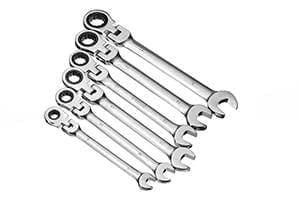 These are the basic mechanic’s tools. Just about anything mechanical that you’re going to have to repair is going to need nuts and bolts removed. Having a good set of ratchets, sockets and wrenches just makes sense.
These are the basic mechanic’s tools. Just about anything mechanical that you’re going to have to repair is going to need nuts and bolts removed. Having a good set of ratchets, sockets and wrenches just makes sense.
Today, more than ever, you’ve got to have SAE and metric sized wrenches and sockets. As a country, we are in the process of transitioning from SAE to metric, so you never know what you’re going to have to deal with on a piece of equipment. But the newer it is, the more likely it is to use metric hardware.
Honing Wheel
The old-fashioned honing wheel is one of the great tool inventions of all times. It can be used to put a fine edge on any edged tool and it can do it much more quickly than using a wetstone. While you may still want to keep a wetstone around for your knives, the honing wheel will be especially important for your axes, chisels and other cutting tools.
You can actually still find these fairly easily in many parts of the country. Most are old ones; but they aren’t really considered to be collectible, like many old tools are. So the prices are fairly good.
Saw Tooth Set
Most saws have the teeth set to either side of the body of the blade. This is so that there will be some gap between the material being cut and the side of the blade, reducing friction. Without the teeth being “set” to the sides like this, it would be virtually impossible to cut anything with the saw.
To sharpen a saw, the teeth are usually brought back into alignment with the body of the blade, before it is sharpened. The actual sharpening can be done with a file or stone, depending on the blade. Then, once the teeth are sharpened, the teeth need to be “set” again, with alternate teeth offset to opposite sides. That requires a saw tooth set, a specialty tool that you might have a little trouble finding.
What About You?
This is my list, which I’m sure isn’t complete. What else do you thing should be part of your off-grid tool kit? What did I miss? Are there any specialty tools which you would think could make things easier?
You may also like:
This Homemade Device Can Power Up Your Entire House 7 Days in a Row (Video)
How to “Winterize” Your Pipes and Prevent Damage
How To Make Money Off-Grid: Making A Living From Your Homestead
How To Install A Trip Wire Alarm On Your Property





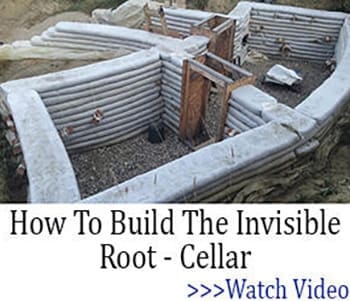
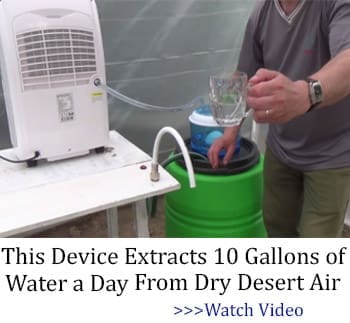



I can think of a few that you should have like a good set of metal and wood files, chisels, gouges, wood carving knives, diamond sharpening stones and two strop (one for stropping compound and the other plain to finish sharpening with.)
There are a significant number of items mentioned here that require their own subset of support equipment systems. Living off grid is about changing to a whole different “Way of life” not just a collection of various items. This article mentions a root cellar but shows canning jars; indicating to me that you certainly need a canner/pressure canner and all the items that support it. Since canners are powered by heat, this means the wood stove will do a good job of that aspect.
Having a butter churn, implies having a cow to milk. That has its own set of requirements as do gathering eggs…you need chickens and a place to keep them safe and to some extent warm (assuming you live north of 45th parallel.
Growing your own food, as you mentioned has its own requirements, and among those are the hand tools needed to work the soil as well as cultivate. That list isn’t as extensive as one might think.
My point though is that off grid living, is more a WAY OF LIFE closely akin to that which our ancestors had BEFORE the advent of electric power. Each of the areas of a homestead that one must develop has its own requirements for tools and equipment. To list those here (after 15 years of gathering them) would be extensive, but the joy of having them is unparalleled.
While the article is informative, it would have been nice if you had product suggestions, especially for those of us who do not know where to start or go to buy these things. I have been trying to find a hand-cranked grain mill. There are a number of them, but none of them have great reviews (except the expensive ones). I have to start everything from scratch, but would like greater direction from those with experience. I’m a little disappointed.